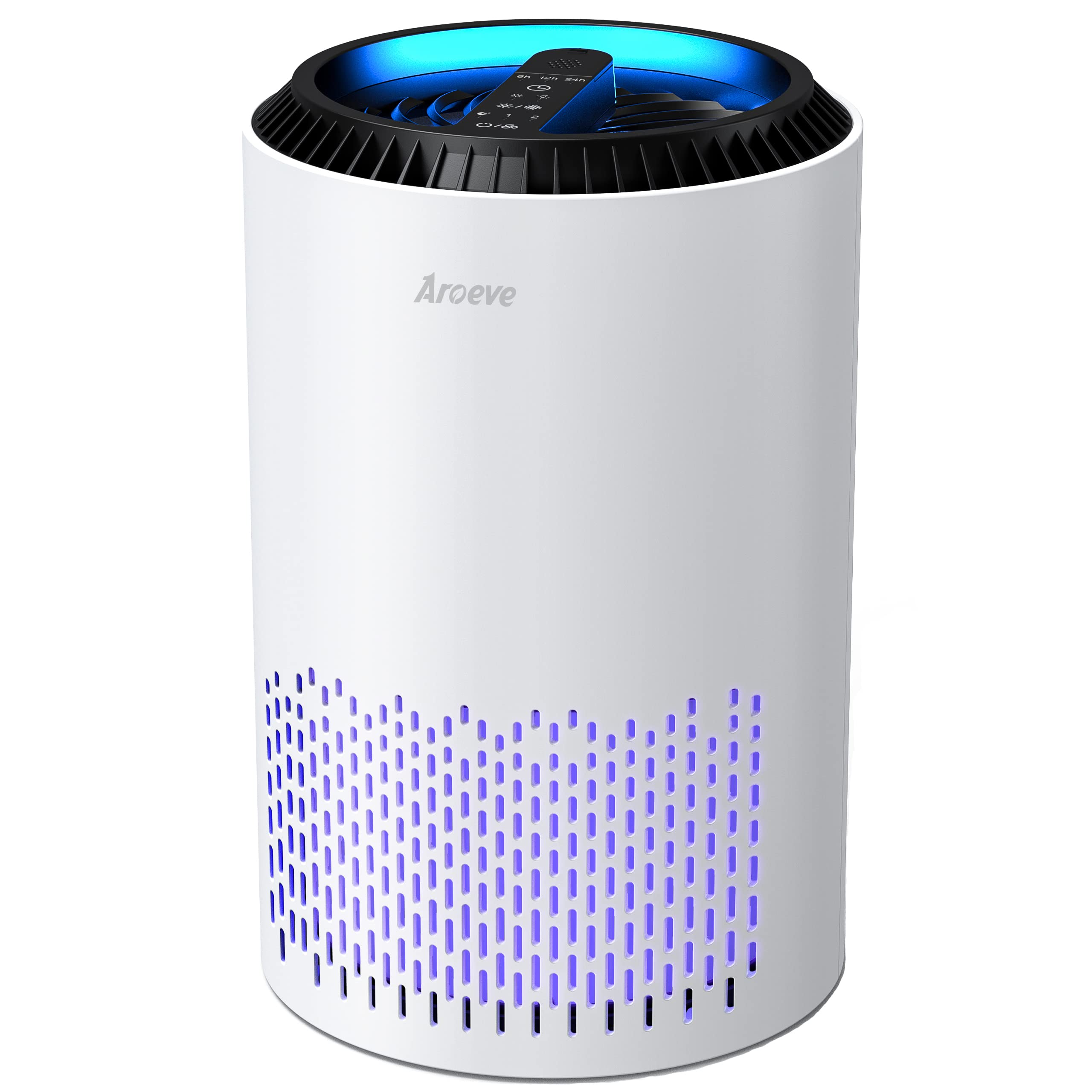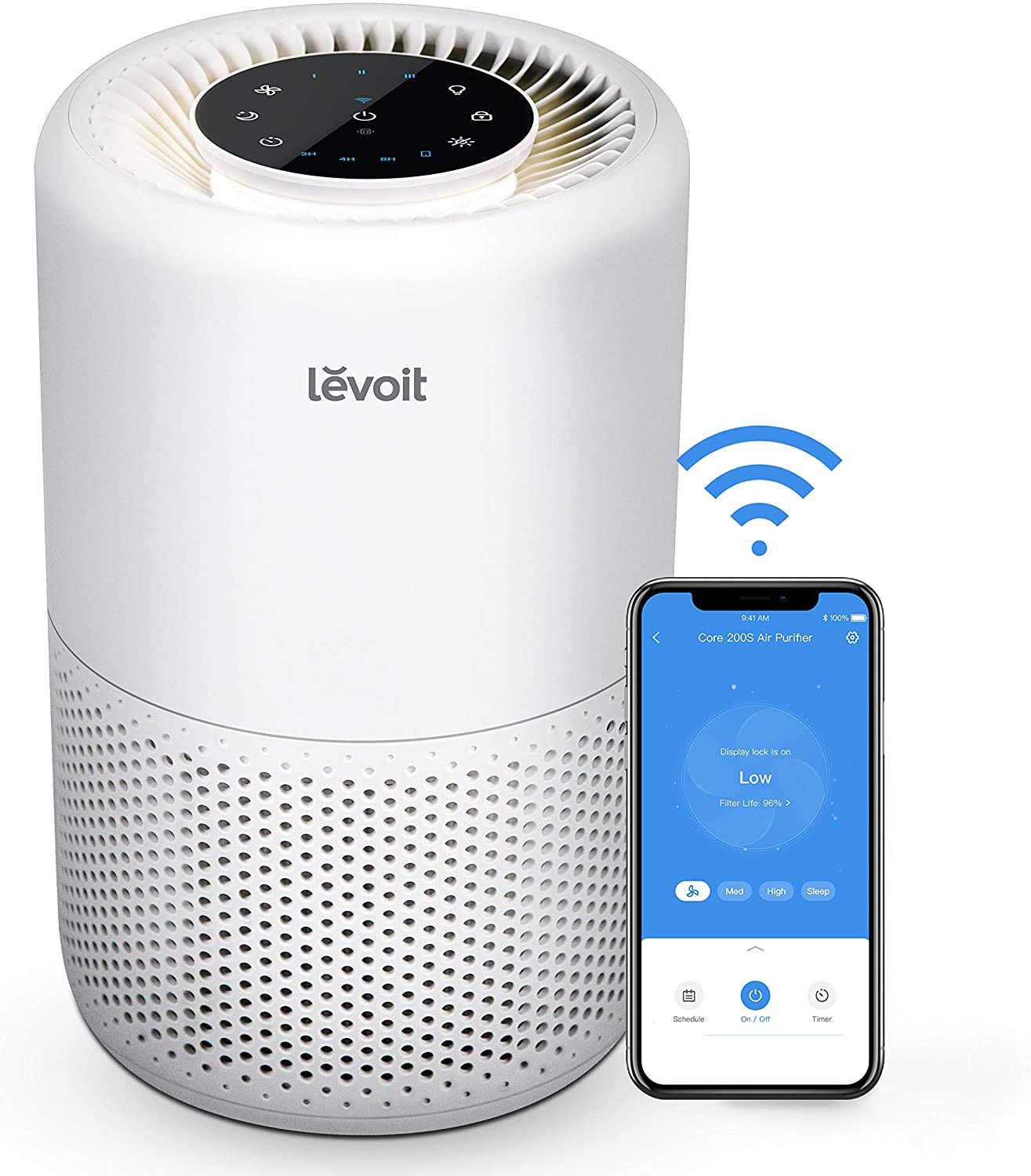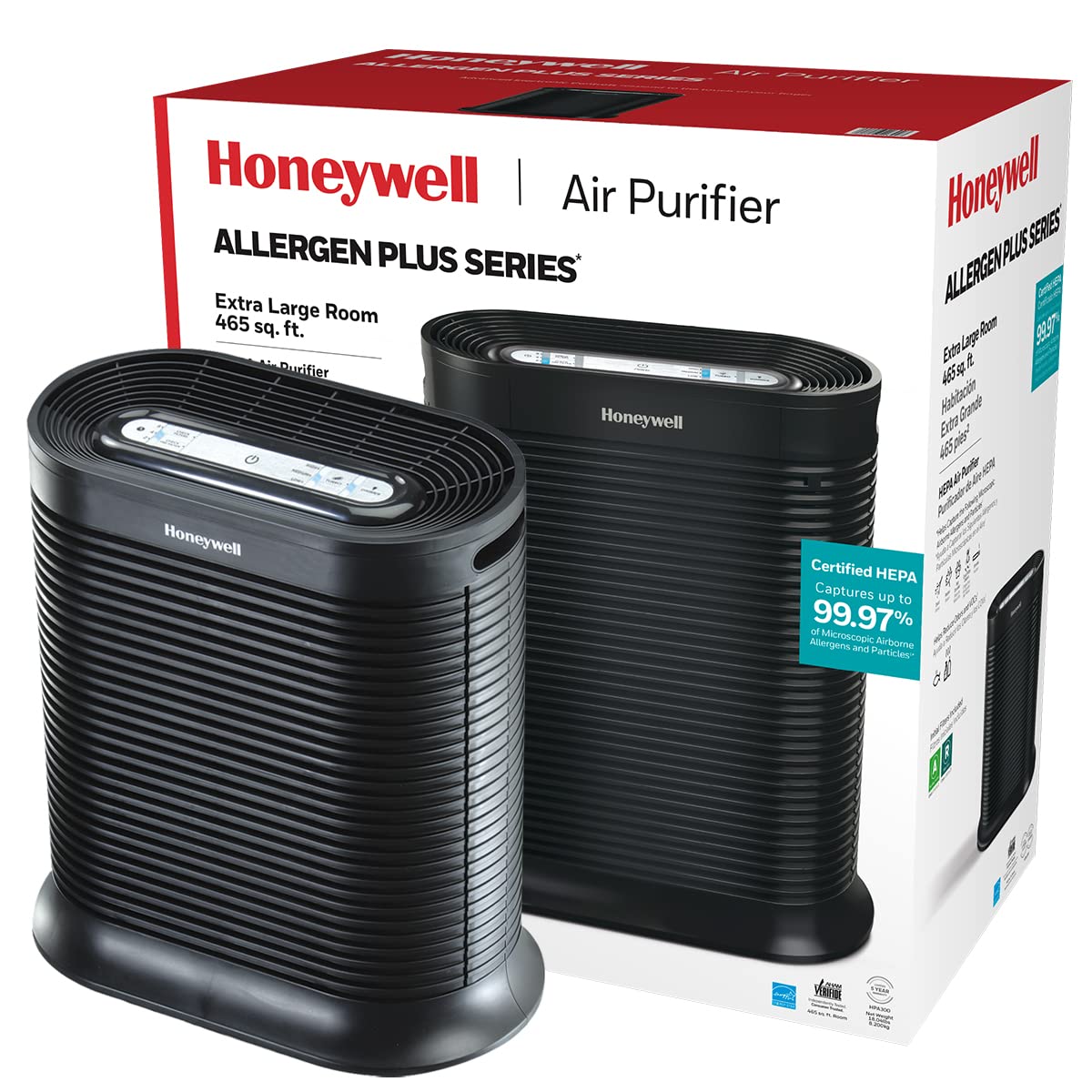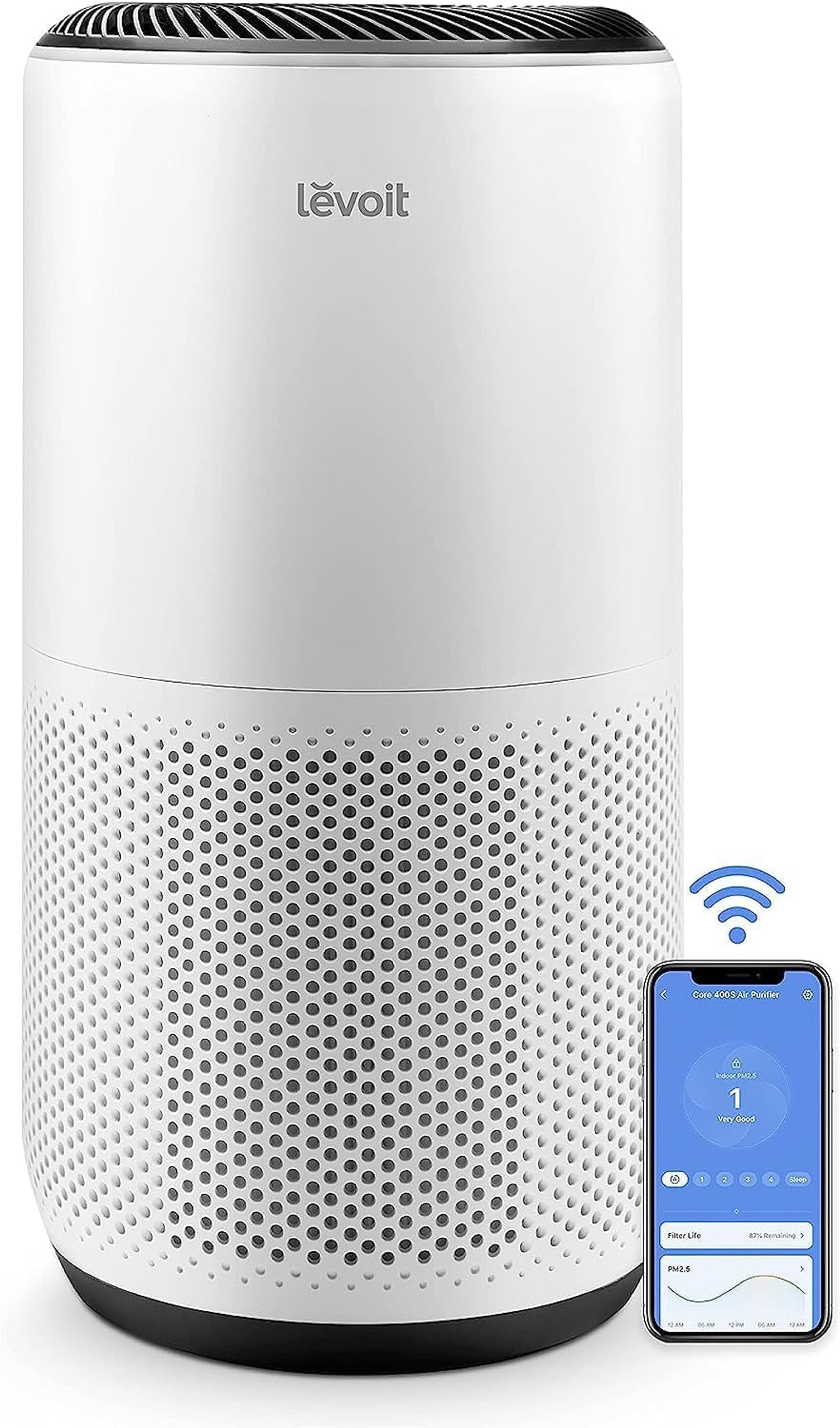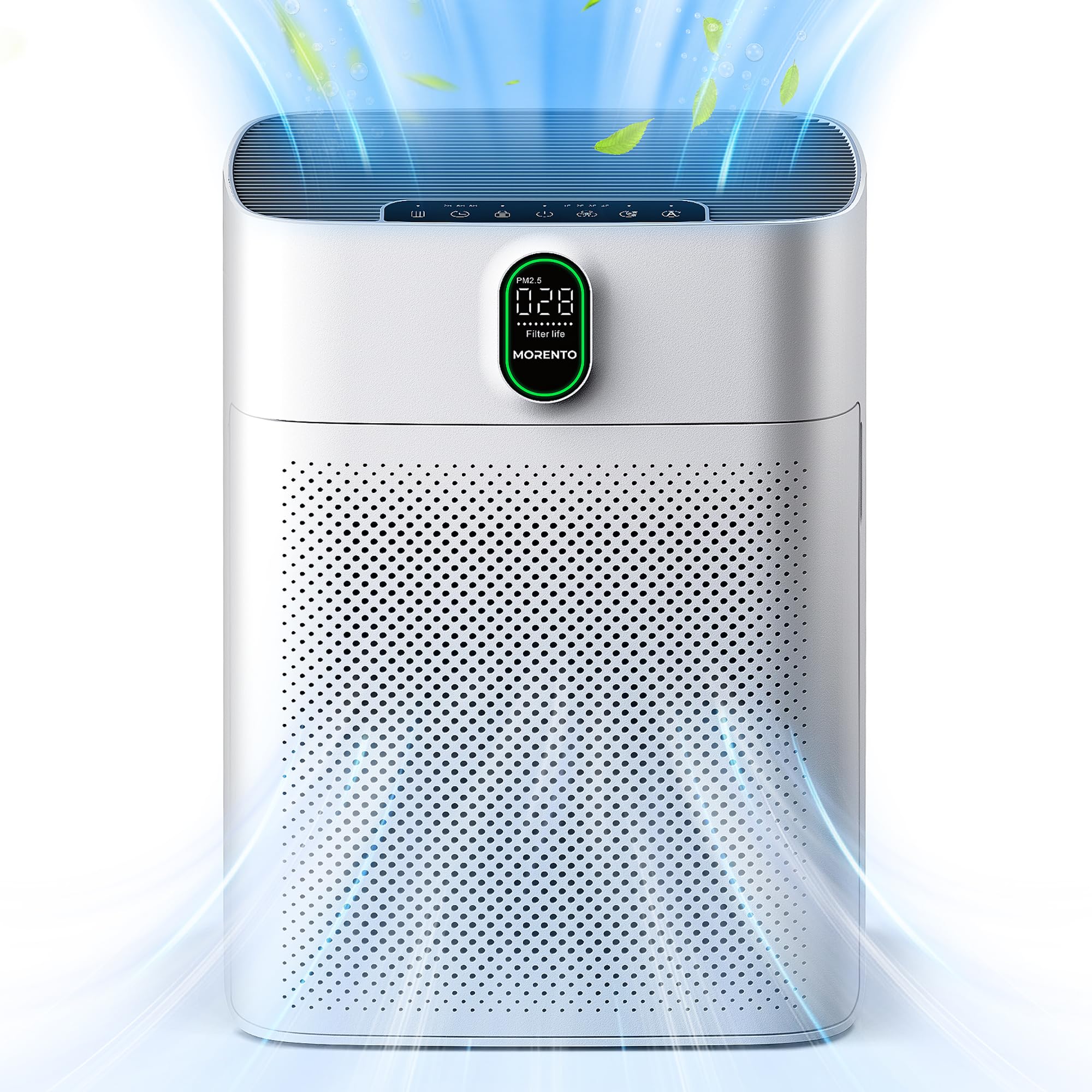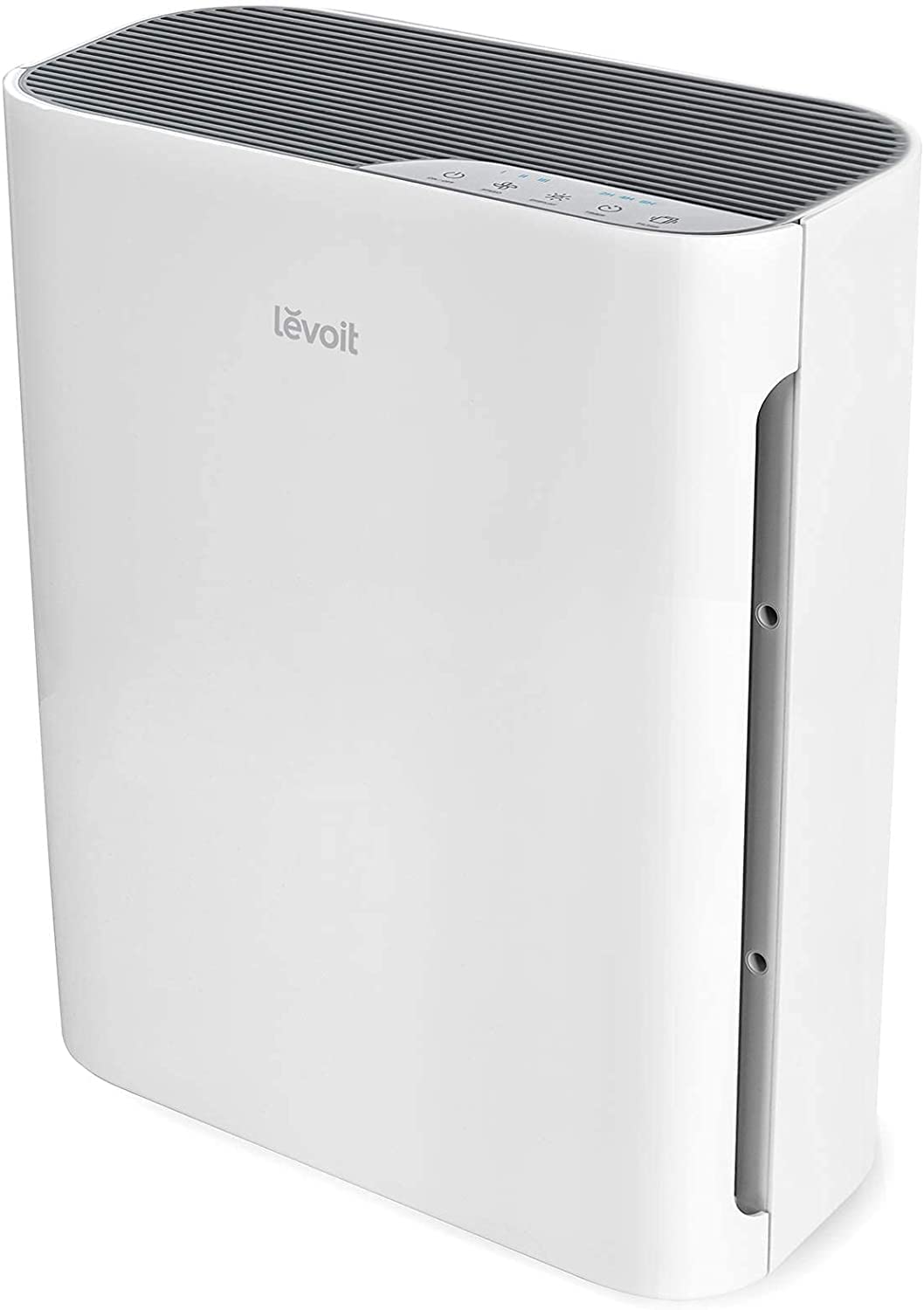FAQs - Advanced Queries
Where Do You Put Air Purifier

Hello there!
Wondering where to put your air purifier for maximum effectiveness? Well, you’ve come to the right place! In this article, we’ll delve into the importance of proper placement and provide you with some expert tips on where to position your air purifier for optimal results.
No need to worry, we’ve got you covered with all the scientific facts and data you need to make an informed decision.
So let’s get started and clear the air together!
Key Takeaways
- Proper placement is crucial for effective air purification and improved indoor air quality.
- Placing the air purifier near sources of pollutants helps capture and eliminate harmful particles.
- Central placement of the air purifier ensures efficient air circulation and removal of pollutants.
- Strategic placement of the air purifier in specific rooms can target and remove allergens and pollutants for better sleep, productivity, and odor control.
Importance of Proper Placement
Proper placement of an air purifier is essential for effective purification. Furniture placement plays a crucial role in determining the impact of an air purifier on air quality.
When positioning an air purifier, it is important to consider the layout of the room and the flow of air. Placing the unit near sources of pollutants, such as furniture or carpets, can help capture and eliminate harmful particles.
Additionally, ensuring that the air purifier has enough space around it for proper air circulation is vital. This allows the device to effectively capture and filter the air, improving overall indoor air quality.
Factors to Consider Before Placing an Air Purifier
When considering the placement of an air purifier, there are several key factors to take into account.
Firstly, the location and air circulation of the room are crucial in ensuring optimal performance. Proper air circulation allows for the purification of a larger volume of air, while avoiding stagnant areas where pollutants may accumulate.
Additionally, the size and layout of the room should be considered, as larger spaces may require multiple units or a more powerful purifier to effectively clean the air.
Lastly, proximity to pollution sources such as traffic, industrial areas, or construction sites can greatly impact the effectiveness of an air purifier. It will need to work harder to filter out the increased levels of pollutants in the surrounding environment.
Location and Air Circulation
You should consider placing the air purifier in a central area of the room for better air circulation. Proper air circulation is important for the effectiveness of an air purifier. When placed in a central location, the purifier can efficiently circulate the air in the room, ensuring that all areas are covered.
This allows the purifier to effectively remove pollutants, allergens, and other harmful particles from the air, improving indoor air quality. The benefits of proper placement extend beyond just air purification. By having the air purifier in a central area, it can also help with temperature and humidity regulation.
Additionally, placing the purifier away from walls or furniture can prevent obstructions and allow for better air flow. Overall, considering the importance of air circulation and the benefits of proper placement is crucial when determining where to position your air purifier.
Size and Room Layout
To ensure optimal performance, it’s important to consider the size of your room and its layout when deciding where to place the air purifier.
The room size plays a significant role in determining the effectiveness of the air purifier. Larger rooms may require a more powerful unit, while smaller rooms may benefit from a compact purifier.
Additionally, the furniture arrangement can impact the airflow and distribution of clean air. It is recommended to place the air purifier in a central location, away from obstructions such as walls or large pieces of furniture. This allows for better air circulation and ensures that the entire room benefits from the purifying effects.
Proximity to Pollution Sources
Placing the air purifier near sources of pollution, like kitchen areas or smoking zones, can help improve the air quality in those specific areas.
Proximity to outdoor pollutants can greatly impact indoor air quality, as pollutants from outside can easily infiltrate indoor spaces through open windows or doors.
By positioning the air purifier in close proximity to these pollution sources, it can effectively capture and remove harmful particles, gases, and odors, thus reducing their impact on the indoor air.
Scientific studies have shown that this strategic placement can result in significant improvements in indoor air quality, creating a healthier and more comfortable environment for occupants.
However, it is important to note that while placing the air purifier near pollution sources can target specific areas, it is recommended to have multiple units placed strategically throughout the entire space for comprehensive air purification.
Transitioning to the subsequent section about ideal locations for air purifiers, there are certain areas in a home or office that are more suitable for optimal air purifier performance.
Ideal Locations for Air Purifiers
The best spots to place air purifiers are in rooms where you spend the most time. Proper placement of air purifiers is crucial to maximize their effectiveness in improving indoor air quality. Here are some ideal locations for air purifiers and the benefits of placing them there:
| Room | Benefits |
|---|---|
| Bedroom | Reduces allergens for better sleep |
| Living room | Filters out pollutants from daily activities |
| Home office | Enhances productivity and concentration |
| Kitchen | Removes cooking odors and airborne particles |
Avoid These Common Mistakes in Placement
Make sure not to overlook the importance of proper placement when setting up your air purifiers. The placement of your air purifier plays a crucial role in its effectiveness in improving indoor air quality.
To maximize the benefits of your air purifier, it is essential to consider a few key factors. Firstly, place your air purifier in a central location within the room to ensure proper air circulation. Avoid placing it near walls or furniture that can obstruct the airflow.
Secondly, consider the size of the room and the capacity of the air purifier. Larger rooms may require multiple units or a more powerful purifier.
Lastly, be mindful of any potential sources of pollution in the room, such as smoke or pet dander. By strategically placing your air purifier, you can ensure that it efficiently removes airborne contaminants and promotes a healthy living environment.
Best Placement for Allergy Relief
To maximize allergy relief, make sure you position your air purifier in a central location where it can effectively circulate clean air throughout the room.
This is important because the main purpose of an air purifier is to remove allergens and pollutants from the air, reducing allergy symptoms and improving air quality.
By placing the air purifier in a central location, it can efficiently capture and filter the air in the room, ensuring that the clean air it produces reaches all corners.
This is especially crucial for individuals who suffer from allergies, as allergens can be present throughout the entire space.
Placing an Air Purifier in a Bedroom
When considering the optimal placement of an air purifier for maximum effectiveness, it is important to take into account several factors.
Firstly, the placement should be strategic to ensure that the air purifier can effectively circulate and filter the air in the room.
Secondly, it is crucial to consider the noise level generated by the air purifier, especially in a bedroom where a quiet environment is desired for restful sleep.
Lastly, the available space in the room should be considered to ensure that the air purifier can be placed without obstructing movement or causing inconvenience.
Optimal Placement for Effectiveness
Did you know that the optimal placement for your air purifier is in a central area of the room, away from any walls or furniture?
This location ensures that the purifier can effectively circulate and filter the air throughout the entire space. By placing the air purifier in a central area, it can remove airborne pollutants from all corners of the room, improving the overall air quality.
Clean air is of utmost importance for our health and well-being. Air purifiers play a crucial role in removing harmful particles such as dust, pollen, pet dander, and even volatile organic compounds (VOCs) from the air we breathe.
The benefits of air purifiers include reducing allergies and asthma symptoms, improving sleep quality, and creating a healthier indoor environment.
Consider Noise and Space
Consider the noise level and available space before choosing the optimal placement for your air purifier. When deciding where to place your air purifier, it’s important to take into account both the aesthetics of your space and the functionality of the purifier. In small apartments, where space may be limited, finding the ideal spot can be a challenge. To help you make an informed decision, consider the following factors:
| Factor | Consideration |
|---|---|
| Noise Level | Choose a location away from bedrooms or quiet areas to minimize disturbance. |
| Available Space | Look for areas with enough room for the air purifier to effectively circulate air. |
| Aesthetics | Consider how the air purifier will blend into your décor and choose a visually pleasing location. |
Optimizing Air Purifier Placement in Living Areas
The best spot for your air purifier is in the center of the living area. Placing the air purifier in this location allows for optimal air circulation and coverage throughout the space. It ensures that the purifier can effectively remove airborne pollutants, allergens, and odors from the entire room.
The benefits of using an air purifier in the living area are numerous. Not only does it improve indoor air quality by reducing the presence of pollutants, but it also helps to alleviate symptoms of allergies and asthma. Additionally, air purifiers can help to eliminate unpleasant odors, such as cooking smells or pet odors, creating a more pleasant and fresh environment.
When selecting the best air purifier model for your living area, consider factors such as the size of the room, the efficiency of the purifier’s filtration system, and the noise level produced.
Where to Put an Air Purifier in an Office or Workspace
When determining the ideal placement for an air purifier in an office or workspace, several factors must be considered. The location should be strategically chosen to ensure maximum effectiveness in improving indoor air quality.
Factors affecting purifier location include the size of the space, sources of indoor air pollution, and the layout of the area. By analyzing these factors and applying scientific principles, it is possible to determine the most suitable placement for an air purifier in an office or workspace.
Ideal Placement for Purifier
You should place the air purifier in a central location in the room for optimal effectiveness. This ensures that the purifier can effectively circulate clean air throughout the entire space.
Here are some key reasons why this placement is important:
-
Improved air quality: By placing the purifier in a central location, it can remove airborne pollutants from all corners of the room, ensuring that you breathe in cleaner and healthier air.
-
Reduced allergens: Dust, pollen, and other allergens tend to accumulate in corners and near walls. Placing the purifier in a central location helps to capture these allergens and prevent them from circulating in the air.
-
Enhanced air circulation: A centrally placed purifier helps to improve the overall air circulation in the room, preventing stagnant air and creating a more comfortable environment.
Factors Affecting Purifier Location
Consider factors such as room size, furniture placement, and proximity to potential pollutant sources when deciding where to place your air purifier.
The best locations for an air purifier are typically in the center of the room or near the source of pollution. This allows for optimal air circulation and efficient removal of contaminants.
Common mistakes include placing the purifier near a wall or in a corner, which can restrict airflow and limit its effectiveness. Another mistake is placing the purifier too far away from the pollutant source, reducing its ability to capture and filter the contaminants.
It’s also important to avoid placing the purifier behind or underneath furniture, as this can obstruct the air intake and hinder its performance.
Air Purifier Placement for Pet Owners
If you have pets, it’s important to choose the right placement for your air purifier. Proper placement can help effectively control pet dander and improve the air quality in your home.
Here are some key points to consider when deciding where to place your air purifier:
-
Choose a central location: Placing the air purifier in a central area of your home will allow it to circulate the purified air more efficiently throughout the entire space.
-
Keep it away from obstacles: Ensure that the air purifier has enough space around it to allow for proper airflow. Avoid placing it near furniture, walls, or other obstacles that could obstruct the intake or outlet vents.
Tips for Effective Placement in Open Floor Plans
Placing the air purifier in the center of an open floor plan ensures optimal circulation of purified air throughout the entire space. This strategic positioning allows the air purifier to effectively capture and remove airborne pollutants, improving indoor air quality.
To further enhance the efficiency of air purification, consider the following tips:
-
Avoid obstructions: Keep the air purifier away from furniture, curtains, or walls to prevent blockage of air flow.
-
Choose the right size: Select an air purifier that is suitable for the size of your open floor plan to maximize its effectiveness.
-
Maintain regular cleaning: Clean or replace the filters as recommended by the manufacturer to ensure efficient operation.
Frequently Asked Questions
Can I Place an Air Purifier in the Kitchen?
Yes, you can place an air purifier in the kitchen. It is important for air purifier maintenance and can help improve indoor air quality, especially in small spaces.
Is It Necessary to Have Multiple Air Purifiers in a Large Living Room?
It is not necessary to have multiple air purifiers in a large living room. One well-placed air purifier can effectively clean the air. Different types of air purifiers have their advantages, so choose based on your specific needs.
Should I Place an Air Purifier Near a Window?
Placing an air purifier near a window can have benefits. It allows for better air circulation and can help remove pollutants that enter through the window. However, it’s important to consider other factors like outdoor air quality and noise.
Can I Place an Air Purifier on the Floor or Does It Need to Be Elevated?
When considering floor placement or elevated placement for an air purifier, it’s important to consider factors such as airflow, room size, and the specific needs of your indoor environment.
Is It Recommended to Place an Air Purifier in a Bathroom?
It is not recommended to place an air purifier in a bathroom due to the high humidity levels and limited airflow. Instead, focus on improving ventilation and reducing moisture to maintain good indoor air quality.
Conclusion
In conclusion, it’s essential to consider proper placement when placing an air purifier in your living spaces. By strategically positioning the purifier, you can maximize its effectiveness in improving indoor air quality.
However, let’s not forget the importance of humor in discussing such a serious topic. While a scientific approach is crucial, injecting a touch of satire can evoke emotions and engage the audience in a more relatable manner.
So, let’s laugh while we learn and make our indoor spaces healthier and more enjoyable!
At Aero Guardians, where every piece of information aims to make the world a breath fresher, Samuela’s role as an author has been nothing short of transformative. With a penchant for weaving stories around the science of air purification, Samuela has enriched the platform with content that is both enlightening and captivating.
FAQs - Advanced Queries
What Is PM 2.5 in Air Purifier
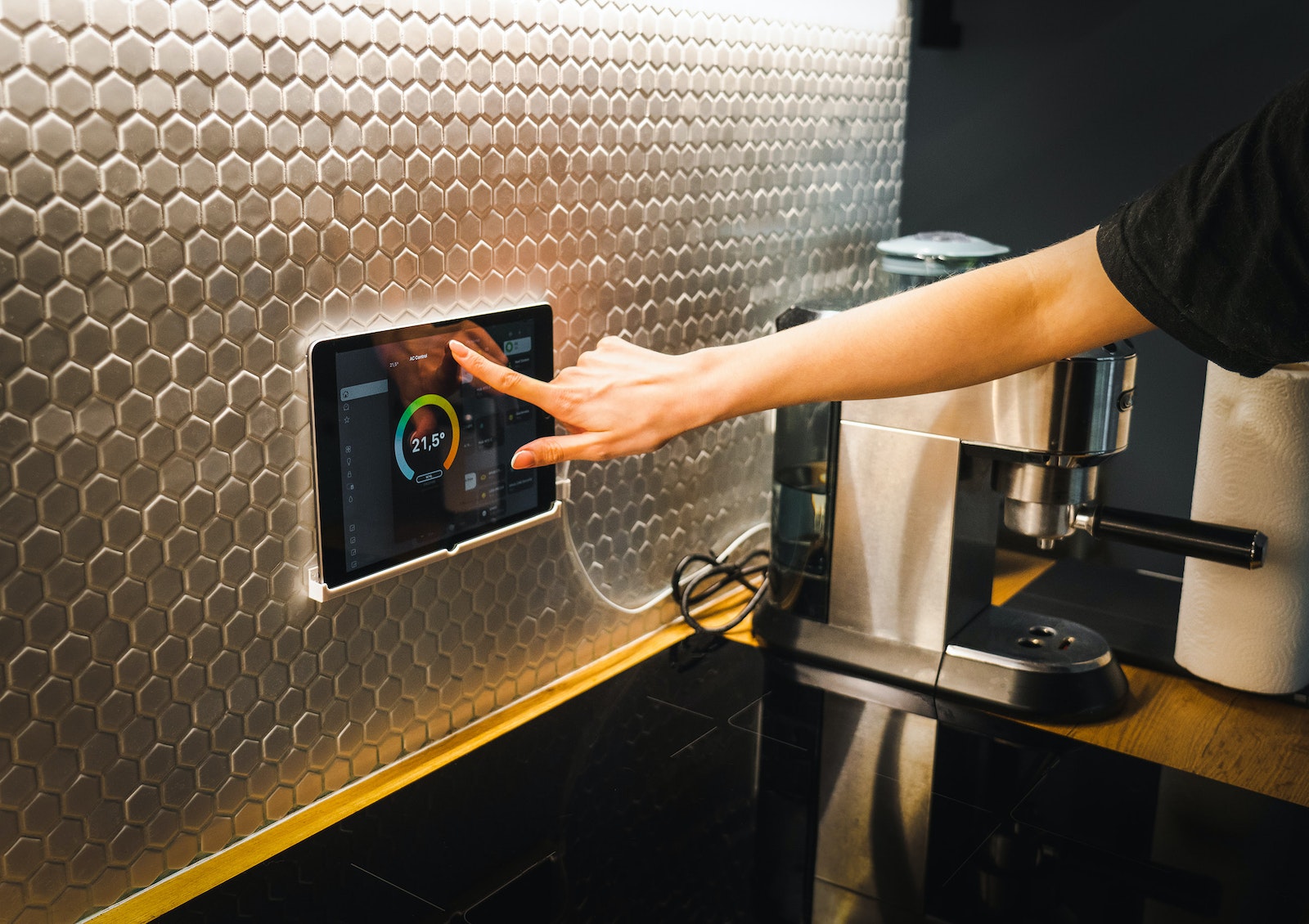
As someone who is passionate about air quality, I have always been intrigued by the elusive PM 2.5 in air purifiers. This minuscule particle, with a diameter of only 2.5 micrometers, plays a crucial role in our overall health.
In this article, we’ll delve into the basics of PM 2.5, explore its sources in indoor air, and understand how air purifiers can effectively filter it out.
Join me on this informative journey as we unravel the secrets of PM 2.5 and discover its role in creating cleaner and healthier indoor spaces.
Key Takeaways
- PM 2.5 refers to particulate matter that is 2.5 micrometers or smaller in diameter and can easily be inhaled and penetrate deep into the respiratory system.
- Prolonged exposure to PM 2.5 can lead to respiratory conditions, reduced lung function, cardiovascular issues, and even premature death.
- Common sources of PM 2.5 include vehicle emissions, industrial processes, fossil fuel combustion, tobacco smoke, and biomass burning.
- Air purifiers with high-efficiency particulate air (HEPA) filters are effective in capturing and removing PM 2.5 particles from indoor air, improving indoor air quality and reducing the risk of health problems.
The Basics of PM 2.5
You’ll want to understand the basics of PM 2.5, as it is an important factor to consider when using an air purifier.
PM 2.5 refers to particulate matter that is 2.5 micrometers or smaller in diameter. These particles are so small that they can easily be inhaled and can penetrate deep into the respiratory system.
To measure PM 2.5, specialized instruments are used that can detect and quantify the concentration of these particles in the air. PM 2.5 standards have been established by regulatory agencies to ensure that the air we breathe is safe and healthy. These standards set limits on the permissible concentration of PM 2.5 particles in the air, aiming to protect human health and the environment.
When choosing an air purifier, it is crucial to consider its effectiveness in removing PM 2.5 particles to ensure clean and breathable air in your indoor environment.
Understanding Air Pollution
Understanding the small particles in the air can help you make informed decisions about improving indoor air quality. Air pollution is caused by a variety of factors, including industrial emissions, vehicle exhaust, and burning of fossil fuels. These pollutants release harmful particles into the atmosphere, with PM 2.5 being a particularly concerning one.
PM 2.5 refers to fine particles that have a diameter of 2.5 micrometers or smaller. These particles are so small that they can easily enter our respiratory system and even penetrate deep into our lungs. Not only does PM 2.5 have a detrimental impact on human health, but it also poses a threat to the environment.
Understanding the causes and impact of PM 2.5 on the environment is crucial in developing effective strategies to mitigate its effects. Now, let’s delve into how PM 2.5 affects our health.
How PM 2.5 Affects Health
As I delve into the health risks of PM 2.5 and its effects on the respiratory system, it becomes evident that this fine particulate matter can have serious consequences for our well-being.
PM 2.5, which refers to particles with a diameter of 2.5 micrometers or smaller, can penetrate deep into the lungs and even enter the bloodstream, leading to various health conditions.
The respiratory system, being the primary target, can suffer from inflammation, reduced lung function, and increased susceptibility to respiratory infections due to prolonged exposure to PM 2.5.
Health Risks of PM 2.5
To protect your health, it’s important to be aware of the potential risks associated with PM 2.5. This fine particulate matter, with a diameter of 2.5 micrometers or less, is present in outdoor pollution and can have serious health effects. Here are four key risks to consider:
- Respiratory problems: Inhalation of PM 2.5 can lead to coughing, wheezing, and shortness of breath, particularly in individuals with pre-existing respiratory conditions like asthma or chronic obstructive pulmonary disease (COPD).
- Cardiovascular issues: PM 2.5 can enter the bloodstream through the lungs and trigger cardiovascular problems such as heart attacks, strokes, and high blood pressure.
- Reduced lung function: Prolonged exposure to PM 2.5 can cause a decrease in lung function, making it harder for the body to take in oxygen and expel carbon dioxide.
- Increased risk of premature death: Studies have shown a link between long-term exposure to PM 2.5 and an increased risk of premature death, particularly due to respiratory and cardiovascular diseases.
Being aware of these risks is crucial in taking steps to reduce exposure and protect your health from the harmful effects of PM 2.5.
Effects on Respiratory System
If you have a pre-existing respiratory condition, it’s important to be aware that prolonged exposure to PM 2.5 can worsen symptoms like coughing and wheezing. PM 2.5 refers to particulate matter that is 2.5 micrometers or smaller in diameter. These tiny particles can easily penetrate deep into the respiratory system, causing inflammation and irritation in the airways.
Long-term exposure to PM 2.5 has been linked to the development and exacerbation of respiratory diseases such as asthma, chronic bronchitis, and emphysema. The smaller size of PM 2.5 allows it to bypass the body’s natural defenses and enter the lungs, where it can cause oxidative stress and damage to lung tissue.
It is crucial for individuals with respiratory conditions to minimize their exposure to PM 2.5 by using air purifiers and avoiding areas with high levels of air pollution.
Sources of PM 2.5 in Indoor Air
When it comes to PM 2.5, understanding its common sources, health impacts, and ways to reduce it is crucial.
Common sources of PM 2.5 include emissions from vehicles, industrial processes, and fossil fuel combustion.
These fine particles can have detrimental effects on our health, such as respiratory and cardiovascular problems.
To reduce PM 2.5 levels, implementing measures like improving air filtration systems, reducing emissions from vehicles and industries, and promoting the use of cleaner energy sources are essential.
Common PM 2.5 Sources
You can find common PM 2.5 sources in various places such as vehicle emissions, industrial pollution, and tobacco smoke. These sources contribute to both indoor air quality and outdoor pollution. It is important to be aware of these sources in order to take measures to reduce exposure to PM 2.5.
Here are four common PM 2.5 sources:
- Vehicle Emissions: Cars, trucks, and motorcycles release PM 2.5 particles into the air through exhaust emissions.
- Industrial Pollution: Factories and power plants release PM 2.5 particles as by-products of their operations.
- Tobacco Smoke: Smoking cigarettes or being exposed to secondhand smoke releases PM 2.5 particles into the air.
- Biomass Burning: The burning of wood, crop residues, and other organic materials produces PM 2.5 particles.
Health Impacts of PM 2.5
To protect yourself from the health impacts of PM 2.5, it’s important to limit your exposure to common sources such as vehicle emissions, industrial pollution, tobacco smoke, and biomass burning. PM 2.5 refers to fine particles with a diameter of 2.5 micrometers or smaller. These particles can easily penetrate the respiratory system and enter the bloodstream, causing a range of health issues. Long-term exposure to PM 2.5 has been linked to respiratory and cardiovascular problems, including asthma, bronchitis, and heart disease. To reduce your risk, consider taking preventive measures such as using air purifiers, wearing masks in polluted areas, and avoiding outdoor activities during periods of high pollution. By taking these precautions, you can minimize your exposure to harmful PM 2.5 particles and safeguard your health.
| Prevention Measures | Long-Term Exposure |
|---|---|
| Use air purifiers | Avoid polluted areas |
| Wear masks | Limit outdoor activities |
| during high pollution |
Ways to Reduce PM 2.5
Now that we understand the health impacts of PM 2.5, let’s explore ways to reduce its levels.
Monitoring PM 2.5 is crucial in maintaining a healthy indoor environment. Here are some effective methods:
- Air purifiers: Investing in a high-quality air purifier with HEPA filters can efficiently remove PM 2.5 particles from the air.
- Ventilation: Proper ventilation is essential to ensure fresh air circulation and dilute the concentration of PM 2.5 indoors.
- Regular cleaning: Dust and other pollutants can contribute to PM 2.5 levels. Regularly cleaning surfaces, carpets, and furniture helps minimize these particles.
- Outdoor activities: Avoiding outdoor activities during peak pollution hours can reduce exposure to PM 2.5 and protect your health.
Reducing PM 2.5 levels brings several benefits, including improved respiratory health, decreased risk of cardiovascular diseases, and enhanced overall well-being.
The Role of Air Purifiers in Filtering PM 2.5
When using an air purifier, it’s important to understand how it filters PM 2.5 particles.
Air purifiers play a crucial role in reducing allergies by effectively removing PM 2.5 from indoor air. These tiny particles, measuring 2.5 micrometers or less in diameter, can be harmful to our health when inhaled.
PM 2.5 particles are not only present in outdoor air but can also enter our homes and offices through various sources such as vehicular emissions and industrial pollution. Breathing in high levels of PM 2.5 can lead to respiratory issues, cardiovascular problems, and allergies.
By efficiently capturing and trapping these particles, air purifiers help improve indoor air quality and reduce the risk of health problems.
Now that we understand the impact of PM 2.5 on outdoor air quality and the benefits of air purifiers in reducing allergies, let’s move on to choosing the right air purifier for PM 2.5.
Choosing the Right Air Purifier for PM 2.5
Selecting the proper air filtration device is crucial for effectively reducing PM 2.5 particles in indoor environments. To help you make an informed decision, here are four important factors to consider when choosing an air purifier for PM 2.5:
- Filter Efficiency: Look for an air purifier with a high-efficiency particulate air (HEPA) filter. These filters are designed to capture particles as small as 0.3 microns, including PM 2.5.
- CADR Rating: The Clean Air Delivery Rate (CADR) indicates how quickly an air purifier can clean the air in a room. Higher CADR ratings mean faster and more efficient purification.
- Coverage Area: Consider the size of the room where you plan to use the air purifier. Ensure that the device is capable of covering the desired area to effectively remove PM 2.5 particles.
- Noise Level: Some air purifiers can be noisy, which can be bothersome in indoor environments. Look for models with a low noise level to maintain a peaceful atmosphere.
Choosing the right air purifier with the appropriate features and from reputable brands is essential for effectively reducing PM 2.5 particles indoors. However, it’s equally important to understand the significance of air purifier filters in capturing and removing these harmful particles.
The Importance of Air Purifier Filters for PM 2.5
The proper air filtration device is crucial in effectively reducing PM 2.5 particles indoors. Understanding the significance of air purifier filters is essential.
Air pollution prevention and air quality monitoring are important aspects of maintaining a healthy indoor environment. PM 2.5 refers to particulate matter that is 2.5 micrometers or smaller in diameter, which can be harmful when inhaled.
Air purifier filters play a vital role in removing these tiny particles from the air. HEPA filters are commonly used in air purifiers as they have the ability to capture PM 2.5 particles effectively. These filters work by trapping the particles in a dense mesh, ensuring cleaner air is released.
Regular maintenance and replacement of filters are necessary to ensure optimal performance and maximum efficiency in reducing PM 2.5 particles.
How to Measure PM 2.5 Levels in Your Home
Measuring PM 2.5 levels in your home can be done using a portable air quality monitor. These devices are designed to provide accurate and real-time measurements of indoor air quality.
Here are four reasons why using a measuring device is crucial for maintaining a healthy indoor environment:
- Accuracy: Portable air quality monitors are specifically calibrated to measure PM 2.5 levels, ensuring precise and reliable results.
- Awareness: By monitoring PM 2.5 levels, you can become more aware of the air quality in your home and take necessary actions to improve it.
- Health Benefits: High levels of PM 2.5 can have adverse effects on respiratory health. Measuring these levels allows you to identify potential health risks and take preventive measures.
- Effectiveness of Air Purifiers: Measuring PM 2.5 levels helps you assess the effectiveness of your air purifier in removing these harmful particles from your indoor environment.
Investing in a portable air quality monitor is a valuable step towards ensuring the best possible indoor air quality for you and your family.
Tips for Reducing PM 2.5 in Indoor Spaces
When it comes to improving indoor air quality, two important factors to consider are the effectiveness of air purifiers and the maintenance of ventilation systems.
Air purifiers can help remove pollutants and allergens from the air, but their effectiveness can vary depending on factors such as the type of filter used and the size of the room.
On the other hand, regular maintenance of ventilation systems is crucial to ensure proper airflow and prevent the accumulation of dust and other contaminants.
Understanding the effectiveness of air purifiers and the importance of ventilation system maintenance can help create a healthier indoor environment.
Air Purifier Effectiveness
You can determine the effectiveness of an air purifier by considering its ability to filter out PM 2.5 particles. To ensure you choose the right air purifier, here are four key features to look for:
- HEPA Filter: A high-efficiency particulate air (HEPA) filter is essential for capturing PM 2.5 particles, as it can trap particles as small as 0.3 microns.
- Activated Carbon Filter: This filter helps remove odors, gases, and volatile organic compounds (VOCs) that may be present in the air.
- Air Quality Sensor: An air purifier with an air quality sensor can automatically adjust its settings based on the pollution level in the room, ensuring efficient purification.
- Timer and Auto Mode: These features allow you to set specific operating times and enable the purifier to adjust its speed automatically.
Remember to regularly clean and replace the filters to maintain the air purifier’s effectiveness. Proper maintenance will ensure that it continues to provide clean and healthy air for you and your family.
Ventilation System Maintenance?
Regularly cleaning and replacing filters is crucial for maintaining the effectiveness of your ventilation system. Proper ventilation is essential for maintaining good indoor air quality and ensuring optimal air flow throughout your home or office.
Over time, filters can become clogged with dust, dirt, and other particles, which can impede air flow and reduce the efficiency of your system. By regularly cleaning and replacing filters, you can prevent these issues and ensure that your ventilation system is operating at its best.
Cleaning filters involves removing them from the system, gently washing them with water or using a vacuum cleaner to remove any accumulated debris. Replacing filters is also important, as they can become worn out and less effective over time.
Common Misconceptions About PM 2.5 and Air Purifiers
One common misconception about PM 2.5 and air purifiers is that they are only effective at removing larger particles. In reality, air purifiers can effectively remove PM 2.5 particles, which are particles that are 2.5 micrometers or smaller in size.
Here are four important facts to dispel the misconceptions surrounding PM 2.5 and air purifiers:
- Air purifiers with HEPA filters can capture PM 2.5 particles with a high efficiency.
- The size of PM 2.5 particles makes them more harmful as they can penetrate deep into the lungs.
- Air purifiers equipped with activated carbon filters can also help reduce PM 2.5 pollution by adsorbing harmful gases and volatile organic compounds.
- It is essential to choose an air purifier that matches the size of the room to ensure optimal performance.
Understanding these facts can help you make informed decisions when it comes to choosing an air purifier to combat PM 2.5 pollution.
Now, let’s explore the future of air purification technology for PM 2.5.
The Future of Air Purification Technology for PM 2.5
As we debunked common misconceptions about PM 2.5 and air purifiers, it is important to consider the future of air purification technology.
The advancements in air filtration technology are paving the way for smart air purifiers that are more efficient and effective in combating PM 2.5 pollution. These innovative devices utilize cutting-edge sensors and algorithms to detect and remove even the smallest particles from the air.
With the integration of Internet of Things (IoT) technology, smart air purifiers can be remotely controlled and monitored, providing real-time air quality data and personalized recommendations.
Additionally, the future holds the promise of more sustainable air purification solutions, such as using renewable energy sources and eco-friendly materials in the manufacturing process.
The future of smart air purifiers is bright, with continuous advancements aiming to create healthier and cleaner indoor environments.
Frequently Asked Questions
Are There Any Long-Term Health Effects Associated With Exposure to PM 2.5?
Exposure to PM 2.5 can have detrimental long-term health effects. These tiny particles can penetrate deep into the lungs, causing respiratory issues, cardiovascular problems, and even premature death. It is crucial to minimize exposure to protect our well-being.
Can Air Purifiers Completely Eliminate PM 2.5 Particles From Indoor Air?
Air purifiers can effectively reduce PM 2.5 particles from indoor air. Mechanical methods, like HEPA filters, capture these particles, while natural methods, such as ionizers, charge them to make them stick to surfaces.
Is It Necessary to Run an Air Purifier 24/7 to Effectively Reduce PM 2.5 Levels?
Is it safe to run an air purifier 24/7? Is there a recommended duration for reducing PM 2.5 levels effectively? Well, running an air purifier continuously can help maintain clean air, but check the manufacturer’s guidelines for optimal usage.
What Are Some Natural Ways to Reduce PM 2.5 in Indoor Spaces, Aside From Using an Air Purifier?
Some natural remedies and DIY solutions can help reduce PM 2.5 levels in indoor spaces. These methods, apart from using an air purifier, are effective in improving air quality and promoting a healthier environment.
How Often Should Air Purifier Filters Be Replaced to Maintain Optimal Performance in Filtering PM 2.5 Particles?
Air purifier filters should be replaced regularly to maintain optimal performance in filtering PM 2.5 particles. To determine the replacement frequency, refer to the manufacturer’s guidelines. Regular maintenance and filter replacements ensure efficient removal of harmful pollutants from the air.
Conclusion
In conclusion, understanding PM 2.5 and its impact on indoor air quality is crucial for maintaining a healthy living environment. With air pollution being a major concern, it is alarming to know that according to the World Health Organization, around 91% of the world’s population lives in areas where the PM 2.5 levels exceed their recommended guidelines.
This statistic emphasizes the urgent need for effective air purifiers that can filter out PM 2.5 particles and protect our health. As technology continues to advance, we can expect even more efficient air purification systems in the future.
At Aero Guardians, where every piece of information aims to make the world a breath fresher, Samuela’s role as an author has been nothing short of transformative. With a penchant for weaving stories around the science of air purification, Samuela has enriched the platform with content that is both enlightening and captivating.
FAQs - Advanced Queries
Which Air Purifier

As someone who is passionate about air quality, I have always been intrigued by the effects of pollutants on our health. Were you aware that indoor air can be up to 5 times more contaminated than outdoor air? This is why selecting the correct air purifier is essential.
In this article, we’ll dive into the world of air purifiers, exploring the different types, key features to consider, and the benefits they offer.
So, let’s embark on this journey of clean and fresh air together!
Key Takeaways
- Regularly clean or replace filters to maintain effectiveness.
- Consider key features such as filter type, room size coverage, noise levels, and maintenance requirements when choosing an air purifier.
- Air purifiers can improve air quality by removing allergens and pollutants, reducing pet dander and odors, and providing a cost-effective solution for pet owners.
- When choosing an air purifier, consider factors such as room size, filter type, noise level, and regular maintenance to ensure effectiveness and convenience.
Types of Air Purifiers
There’s a wide variety of air purifiers available on the market. When it comes to maintaining your air purifier, there are a few key tips to keep in mind.
First, it’s important to regularly clean or replace the filters. This ensures that the purifier continues to effectively remove pollutants from the air.
Second, keep the purifier in a well-ventilated area to allow for proper airflow.
Now, let’s address some common misconceptions about air purifiers. One misconception is that they can eliminate all indoor air pollutants. While air purifiers are effective at reducing pollutants, they cannot completely eliminate them.
Another misconception is that air purifiers can cure allergies or asthma. While they can help alleviate symptoms, they are not a cure.
Understanding these maintenance tips and dispelling misconceptions is important when considering which air purifier to purchase.
Now, let’s move on to key features to consider.
Key Features to Consider
When choosing an air purifier, you should consider key features such as filter type, room size coverage, and noise level. These factors play a crucial role in determining the effectiveness and suitability of an air purifier for your needs.
- Filter type: Different air purifiers use different types of filters, such as HEPA filters, activated carbon filters, or electrostatic filters. Each filter type targets specific pollutants, ensuring a thorough purification process.
- Room size coverage: It is important to choose an air purifier that can effectively clean the air in your specific room size. Consider the square footage coverage provided by the purifier to ensure efficient purification.
- Noise levels: Some air purifiers can produce significant noise, which can be disruptive in certain environments. Look for purifiers that have low noise levels to ensure a peaceful and undisturbed living or working environment.
Additionally, it is important to consider the maintenance requirements of an air purifier. Regular filter replacements and cleaning may be necessary to maintain optimal performance.
Benefits of Using an Air Purifier
Using an air purifier can help improve indoor air quality and reduce the presence of allergens and pollutants. As a pet owner, I understand the importance of maintaining clean and fresh air in my home. Pets can release dander, fur, and odors that can affect the air we breathe. That’s why I invested in a cost-effective air purifier specifically designed for pet owners. This air purifier has a HEPA filter that effectively captures pet dander and allergens, ensuring that the air remains clean and allergen-free. It also has an activated carbon filter that helps eliminate pet odors, keeping my home smelling fresh. I have noticed a significant improvement in my indoor air quality since using this air purifier, making it a worthwhile investment for any pet owner concerned about their respiratory health.
| Benefit | Description |
|---|---|
| Improves air quality | Removes allergens and pollutants, providing cleaner and fresher air |
| Reduces pet dander | Captures and eliminates pet dander, reducing allergy symptoms |
| Eliminates pet odors | Activated carbon filter removes unpleasant pet odors |
| Cost-effective solution | Affordable air purifier option for pet owners |
Factors to Consider When Choosing an Air Purifier
As a consumer, you should consider factors such as the size of the room, the type of filter, and the noise level when choosing an air purifier. These factors play a crucial role in ensuring the effectiveness and convenience of your air purifier.
- Room Size: Consider the square footage of the room where you plan to use the air purifier. It’s important to choose a purifier that is suitable for the size of the room to ensure optimal performance.
- Filter Type: Different air purifiers come with various types of filters, such as HEPA filters or activated carbon filters. Research the common air pollutants in your area and select a filter that can effectively capture those pollutants.
- Noise Level: If you plan to use the air purifier in your bedroom or office, it is essential to choose one with a low noise level. This ensures a peaceful and undisturbed environment while the purifier cleans the air.
Regular air purifier maintenance is also crucial to ensure its longevity and effectiveness. Clean or replace the filters regularly according to the manufacturer’s instructions. By considering these factors and maintaining your air purifier properly, you can enjoy cleaner and healthier air in your living space.
Top Air Purifiers on the Market
To find the top air purifiers on the market, you should consider factors such as customer reviews, energy efficiency, and additional features that suit your specific needs.
When it comes to the best air purifiers for allergies, there are a few top contenders.
One option is the Dyson Pure Cool Link, which not only removes allergens from the air but also acts as a cooling fan.
Another great choice is the Rabbit Air MinusA2, which uses a six-stage filtration system to capture and eliminate allergens.
For those with small spaces, the Coway AP-1512HH Mighty is a compact yet powerful air purifier that is highly effective in removing allergens and odors.
Frequently Asked Questions
How Often Should I Replace the Filters in an Air Purifier?
I replace air purifier filters regularly to maintain optimal performance. Signs of a dirty filter include reduced airflow and a buildup of dust. Regular maintenance ensures clean air and prolongs the life of the purifier.
Can Air Purifiers Help With Allergies Caused by Pet Dander?
Air purifiers can help with allergies caused by pet dander. They filter out airborne allergens, reducing symptoms. While allergy medications provide temporary relief, air purifiers offer long-term benefits for pet owners by continuously removing allergens from the air.
Are There Any Air Purifiers That Can Remove Cigarette Smoke?
Yes, there are air purifiers that can effectively remove cigarette smoke. According to air purifier reviews, the best air purifiers for this purpose have activated carbon filters, which can absorb and neutralize the smoke particles.
Can Air Purifiers Eliminate Household Odors?
Yes, air purifiers can effectively eliminate household odors, including cooking odors. Additionally, they can also be effective in reducing mold spores, improving indoor air quality, and creating a healthier living environment.
Are There Any Air Purifiers That Are Suitable for Larger Rooms or Open Floor Plans?
Yes, there are air purifiers suitable for larger rooms or open floor plans. They are designed to effectively clean the air in spacious areas like offices or classrooms, ensuring optimal air quality for everyone.
Conclusion
In conclusion, when it comes to selecting an air purifier, it’s essential to consider your specific needs and preferences.
While some may argue that air purifiers are not necessary, it’s crucial to acknowledge the numerous benefits they offer in improving indoor air quality.
Scientific evidence supports the efficacy of air purifiers in reducing allergens, pollutants, and even harmful viruses.
With a wide range of options available, finding the right air purifier for your home can greatly enhance your overall well-being and provide peace of mind.
At Aero Guardians, where every piece of information aims to make the world a breath fresher, Samuela’s role as an author has been nothing short of transformative. With a penchant for weaving stories around the science of air purification, Samuela has enriched the platform with content that is both enlightening and captivating.
FAQs - Advanced Queries
What to Check Before Buying Air Purifier

Considering purchasing an air purifier, are you? Let me inform you that it’s not as straightforward as selecting one randomly from a store shelf.
There are a few things you need to check before making that purchase. Lucky for you, I’ve done the research and compiled a comprehensive guide on what to look for.
From important features to consider, to size and coverage area, to types of air filters – I’ve got you covered.
So sit back, relax, and let’s dive into the world of air purifiers.
Key Takeaways
- Advanced filtration systems like HEPA filters, activated carbon filters, or UV-C light technology are important features to consider when buying an air purifier.
- Size and coverage area should be taken into account, including room size compatibility, effective coverage range, filter replacement frequency, noise level, and energy consumption.
- Different types of air filters, such as HEPA filters, activated carbon filters, and ionizer filters, should be considered based on their lifespan and replacement frequency.
- Noise level is a key factor to consider, as a quiet air purifier can create a peaceful environment, improve sleep, concentration, reduce stress, and enhance mental health.
Important Features to Consider
When choosing an air purifier, it’s important to consider the features that are most important to you. With the rapid advancements in air purifier technology, there are a plethora of options available in the market. Conducting a thorough air purifier brand comparison is essential to determine which features align with your needs.
Look for brands that offer advanced filtration systems such as HEPA filters, activated carbon filters, or even UV-C light technology. These technologies are designed to effectively capture and eliminate pollutants, allergens, and even bacteria and viruses from the air. Additionally, consider features like air quality sensors, adjustable fan speeds, and noise levels.
By comparing different brands and their features, you can ensure that you choose an air purifier that meets your specific requirements.
Now, let’s move on to the next important factor to consider: size and coverage area.
Size and Coverage Area
When it comes to choosing an air purifier, there are a few key points to consider.
First and foremost is the room size compatibility – it’s important to ensure that the air purifier you choose is suitable for the size of the room you want to use it in.
Additionally, the effective coverage range of the air purifier is crucial to consider as it determines how well it can clean the air in a given space.
Lastly, the filter replacement frequency is an important factor to keep in mind as it will impact the maintenance and cost of the air purifier in the long run.
Room Size Compatibility
The first thing to consider before purchasing an air purifier is whether it’s compatible with the size of your room. It’s important to choose an air purifier that is suitable for the square footage of your space to ensure optimal performance.
Here are some factors to keep in mind:
- Noise Level: Look for an air purifier that operates quietly, especially if you plan to use it in a bedroom or office where noise can be disruptive.
- Energy Consumption: Check the energy efficiency of the air purifier to avoid high electricity bills. Look for models with energy-saving features or certifications like ENERGY STAR.
Effective Coverage Range
To make sure you choose the right air purifier, it’s crucial to consider the effective coverage range of the device for your specific room size.
The effective coverage range refers to the maximum area that the air purifier can effectively clean and purify. Different air purifiers have different room size recommendations, so it’s important to match the purifier’s coverage range with the size of your room.
This ensures that the air in your room is thoroughly cleaned and purified. Additionally, some air purifiers come with air quality sensors that detect the level of pollutants in the room and adjust the purification settings accordingly.
These sensors provide real-time data on the air quality and help maintain a healthy and clean environment. So, when choosing an air purifier, consider the effective coverage range and look for models with air quality sensors for optimal performance.
Filter Replacement Frequency
It’s important to regularly replace the filters in your air purifier to ensure optimal performance. Neglecting to change the filters can result in reduced air quality and decreased efficiency of your purifier.
Here are some key points to consider regarding filter replacement:
- Air Filter Lifespan: The lifespan of an air filter varies depending on factors such as the quality of the filter and the level of air pollution in your area. On average, filters should be replaced every 3 to 6 months.
- Filter Replacement Cost: The cost of air filter replacements can vary depending on the brand and model of your air purifier. It’s important to factor in the cost of replacement filters when considering the overall cost of owning an air purifier.
- Performance Impact: Regularly replacing filters ensures that your air purifier is functioning at its best, effectively removing pollutants from the air and improving indoor air quality.
- Health Benefits: Clean filters help to reduce the presence of allergens, dust, and other harmful particles in the air, which can have a positive impact on your respiratory health.
Types of Air Filters
Make sure you understand the different types of air filters available before making a decision on which air purifier to buy. The type of air filter used in an air purifier is crucial for both longevity and air quality improvement.
There are three main types of air filters: HEPA filters, activated carbon filters, and ionizer filters.
HEPA filters are highly effective in trapping small particles, such as dust, pollen, and pet dander, improving air quality significantly. They have a long lifespan and only require replacement every 6 to 12 months.
Activated carbon filters are excellent for removing odors and harmful gases from the air. They typically need to be replaced every 3 to 6 months.
Ionizer filters release negative ions into the air to neutralize pollutants. They don’t require replacement, but the ionizing plate may need occasional cleaning.
Understanding the different types of air filters will help you choose the right air purifier for your specific needs, ensuring longevity and improved air quality.
Noise Level
When it comes to choosing an air purifier, one of the key factors to consider is the noise level. As someone who values a peaceful environment, I prefer an air purifier that operates silently.
However, it’s important to take into account your noise tolerance level and whether you can tolerate a slightly louder purifier for the sake of better air quality.
Quiet or Loud
If you want a quieter air purifier, you should look for one with a noise level below 50 decibels. Having a quiet air purifier has its advantages, whether you use it indoors or outdoors.
Here are some reasons why a quieter air purifier is beneficial for your health:
- Better Sleep: A loud air purifier can disrupt your sleep, while a quiet one ensures a peaceful night’s rest.
- Concentration: When working or studying, a quiet air purifier helps to maintain focus and productivity.
- Stress Reduction: Excessive noise can increase stress levels, but a quiet air purifier creates a calm and relaxing environment.
- Improved Mental Health: A quieter air purifier promotes a tranquil atmosphere, which has a positive impact on mental well-being.
Choosing a quiet air purifier not only provides you with cleaner air but also enhances your overall health and well-being.
Noise Tolerance Level
Having a noise tolerance level is important when choosing any appliance for your home. This is especially true when it comes to an air purifier. No one wants a loud and disruptive appliance in their living space. When considering the noise level of an air purifier, it is essential to take into account the room layout and the decibel level of the appliance. To help you make an informed decision, I have created a table that compares the noise levels of different air purifiers based on their decibel rating. This table will give you a visual representation of how loud or quiet each appliance is, allowing you to choose one that suits your noise tolerance level and the layout of your room.
| Air Purifier Model | Decibel Level | Noise Level |
|---|---|---|
| Model A | 40 dB | Quiet |
| Model B | 50 dB | Moderate |
| Model C | 60 dB | Loud |
| Model D | 35 dB | Very Quiet |
| Model E | 55 dB | Moderate |
Silent Operation Preferred?
Silent operation is often preferred when selecting an appliance for your home. When it comes to air purifiers, the noise level can be a deciding factor. Here are some reasons why silent operation is preferred over performance:
- Peaceful Environment: Having a quiet air purifier allows you to enjoy a peaceful atmosphere in your home without any disturbance.
- Better Sleep: A silent air purifier ensures a good night’s sleep as it won’t disrupt your sleep patterns with constant noise.
- Concentration: If you use an air purifier in your workspace, a silent operation will help you stay focused and productive.
- Reduced Stress: Noise pollution can increase stress levels, so a silent air purifier can help create a calm and relaxing environment.
Transitioning into the next section about energy efficiency, it is important to consider not only the noise level but also the energy consumption of an air purifier.
Energy Efficiency
When looking for an air purifier, you should consider the energy efficiency of the product. Energy consumption is an important factor to consider as it directly impacts both your electricity bills and the environment.
A highly efficient air purifier will consume less energy, saving you money in the long run and reducing your carbon footprint. To determine the energy efficiency of an air purifier, you can check its ENERGY STAR rating or look for the Energy Efficiency Ratio (EER) mentioned in the product specifications.
Additionally, consider the type of filtration system used in the air purifier, as some systems may require more energy to operate effectively. By choosing an energy-efficient air purifier, you can ensure cleaner air while minimizing your environmental impact.
Maintenance Requirements
After considering the energy efficiency of an air purifier, it’s important to also think about its maintenance requirements. Maintaining your air purifier is crucial for its longevity and optimal performance. Here are some factors to consider:
- Air purifier lifespan: Different models and brands have varying lifespans. It’s important to choose one that has a longer lifespan to avoid frequent replacement.
- Filter replacement: Most air purifiers come with filters that need to be replaced regularly. Consider the cost and availability of replacement filters before making a purchase.
- Cleaning requirements: Some air purifiers require regular cleaning to remove dust and debris from the filters and other components. Check the cleaning instructions and consider how much time and effort you are willing to invest in maintenance.
- Maintenance cost: In addition to filter replacements, consider other maintenance costs such as electricity usage and any additional accessories required.
Considering these factors will help you assess the long-term maintenance requirements and costs associated with the air purifier you are considering.
Now let’s move on to explore additional features and functions to further enhance your air purification experience.
Additional Features and Functions
To enhance your air purification experience, you’ll want to consider the additional features and functions available in different models and brands of air purifiers. One important feature to look for is smart technology integration. This allows the air purifier to connect to your home network and be controlled remotely using your smartphone or other devices. With smart technology, you can easily adjust settings, monitor air quality, and receive notifications when the filters need to be replaced.
Another key feature to consider is air quality monitoring. Some air purifiers have built-in sensors that continuously monitor the air quality in your home. These sensors can detect pollutants such as dust, pollen, and pet dander, and automatically adjust the purification settings accordingly. This ensures that you are always breathing clean and healthy air.
When choosing an air purifier, it’s important to carefully review the additional features and functions offered by different models. By selecting a purifier with smart technology integration and air quality monitoring, you can have peace of mind knowing that you are getting the most effective and efficient air purification system for your home.
Customer Reviews and Ratings
Customer reviews and ratings provide valuable insights into the performance and satisfaction of different air purifier models. These reviews can help us make informed decisions when purchasing an air purifier.
Here are a few reasons why customer reviews are important:
- Real-life experiences: Customer reviews allow us to learn from the experiences of others who have already used the air purifier. We can get a sense of how well it performs in different environments and if it meets our specific needs.
- Performance evaluation: Customers often share their thoughts on the effectiveness of an air purifier in removing allergens, dust, and odors from the air. These insights help us gauge the performance of the device and determine if it aligns with our expectations.
- Long-term reliability: Reviews often mention the durability and reliability of an air purifier over time. This information is crucial in understanding if the device will last and continue to perform well in the long run.
- Overall satisfaction: Customer ratings provide an overall satisfaction score, giving us an idea of how well-regarded the air purifier is among its users. This helps us assess if it is a reliable choice for improving indoor air quality.
Price Range and Budget
After considering customer reviews and ratings, the next important factor to consider when buying an air purifier is the price range and budget.
It is crucial to understand the cost considerations and explore affordability options before making a final decision. Air purifiers come in a wide range of prices, depending on their features, size, and brand.
Setting a budget beforehand will help narrow down the options and prevent overspending. Additionally, it is essential to factor in the long-term costs of owning an air purifier, such as filter replacements and energy consumption.
Some models may have lower upfront costs but higher maintenance expenses. Therefore, it is crucial to weigh the initial cost against the long-term expenses to ensure the chosen air purifier fits within your budget and provides the desired air quality improvements.
Frequently Asked Questions
Can an Air Purifier Completely Eliminate All Types of Indoor Air Pollutants?
An air purifier can effectively reduce the presence of various indoor air pollutants, but it may not completely eliminate all types. Factors such as the purifier’s filtration system and the specific pollutants present should be considered before purchasing.
How Long Do Air Filters Typically Last Before They Need to Be Replaced?
Air filter lifespan varies depending on usage and quality. It is recommended to replace air filters every 3 to 6 months, or as indicated by the manufacturer. Regularly checking and replacing filters ensures optimal air purification.
Is It Safe to Use an Air Purifier in a Room Where a Baby or Young Child Sleeps?
Using an air purifier in a baby’s room is safe as long as you choose a model with a HEPA filter. HEPA filters are highly efficient at removing airborne particles, ensuring a clean and healthy environment for your little one.
Are There Any Potential Health Risks Associated With Using an Air Purifier?
There can be potential side effects and long-term effects associated with using an air purifier. It’s important to research and choose a purifier that meets safety standards and is suitable for your specific needs.
Can an Air Purifier Help Reduce the Spread of Viruses and Bacteria in the Air?
An air purifier can help reduce the spread of viruses and bacteria in the air. Regular maintenance is important to ensure its effectiveness. Before buying one, it’s crucial to check for features like HEPA filters and AHAM certification.
Conclusion
In conclusion, purchasing an air purifier is a decision that should not be taken lightly. It is crucial to consider important features such as size, coverage area, air filters, noise level, energy efficiency, and maintenance requirements.
Additionally, looking into additional features and functions, reading customer reviews and ratings, and setting a price range and budget are essential steps in making an informed choice.
By considering all these factors in parallel, you can ensure that you select the perfect air purifier that meets your specific needs and provides clean, fresh air for you and your loved ones.
At Aero Guardians, where every piece of information aims to make the world a breath fresher, Samuela’s role as an author has been nothing short of transformative. With a penchant for weaving stories around the science of air purification, Samuela has enriched the platform with content that is both enlightening and captivating.
-

 Air Purifier Guides7 months ago
Air Purifier Guides7 months agoHow to Reset Filter on Miko Air Purifier
-
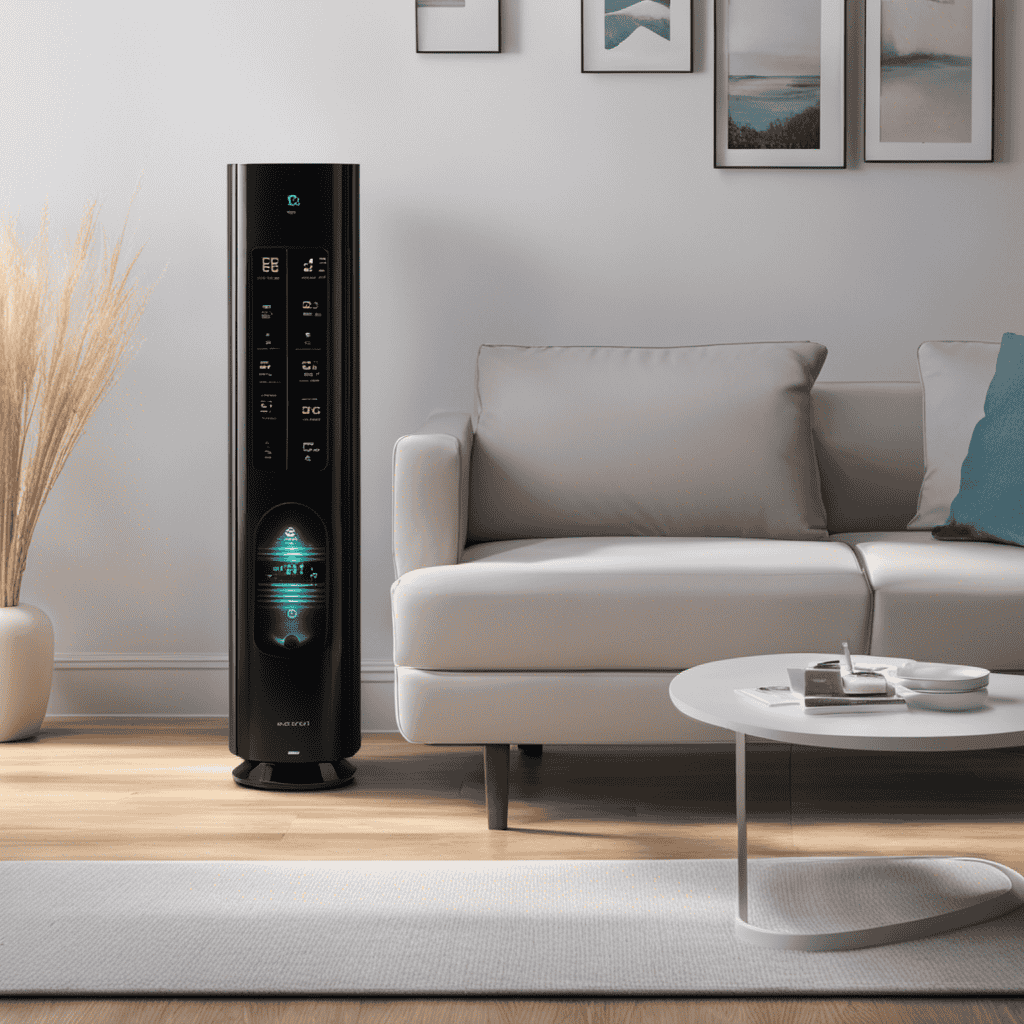
 FAQs - Advanced Queries4 months ago
FAQs - Advanced Queries4 months agoWhat Do the Numbers on My Air Purifier Mean
-
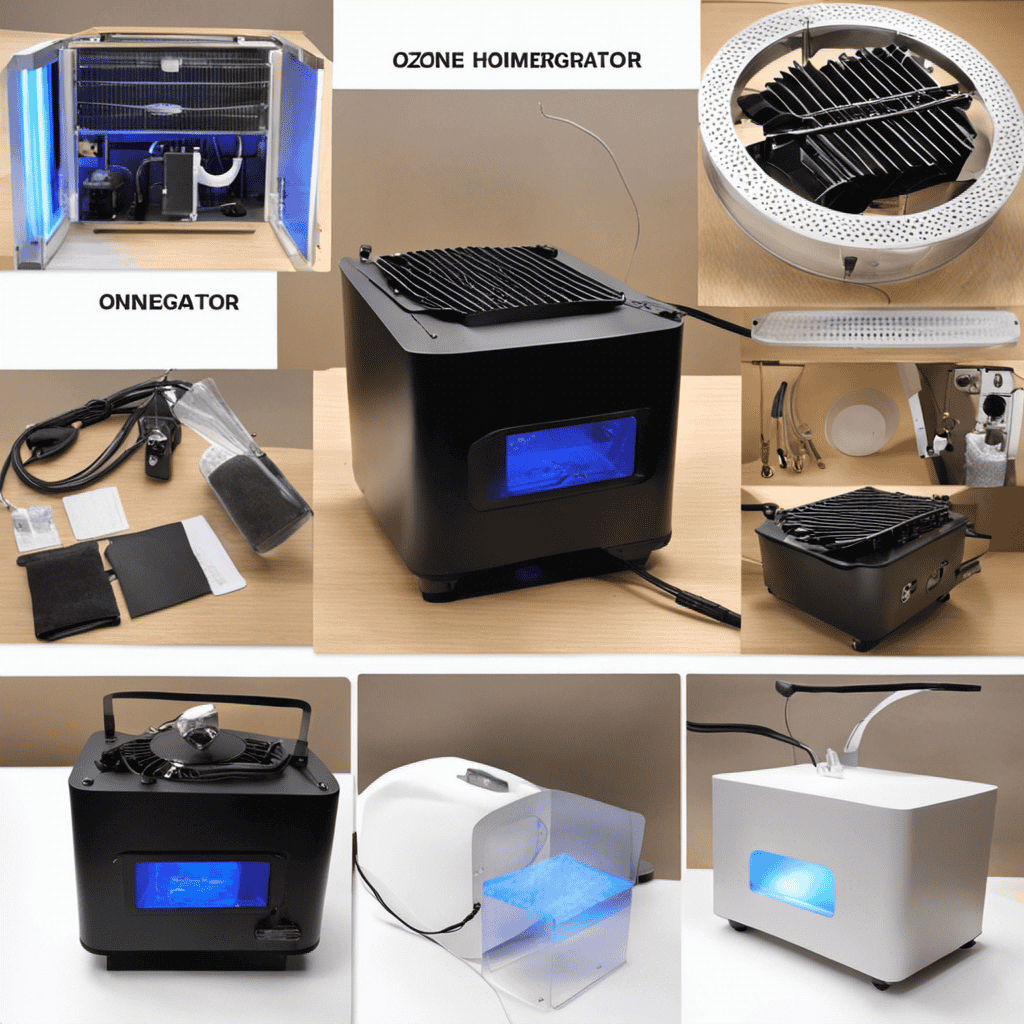
 Air Purifier Guides5 months ago
Air Purifier Guides5 months agoHow to Make a Homemade Ozone Generator (Air Purifier
-
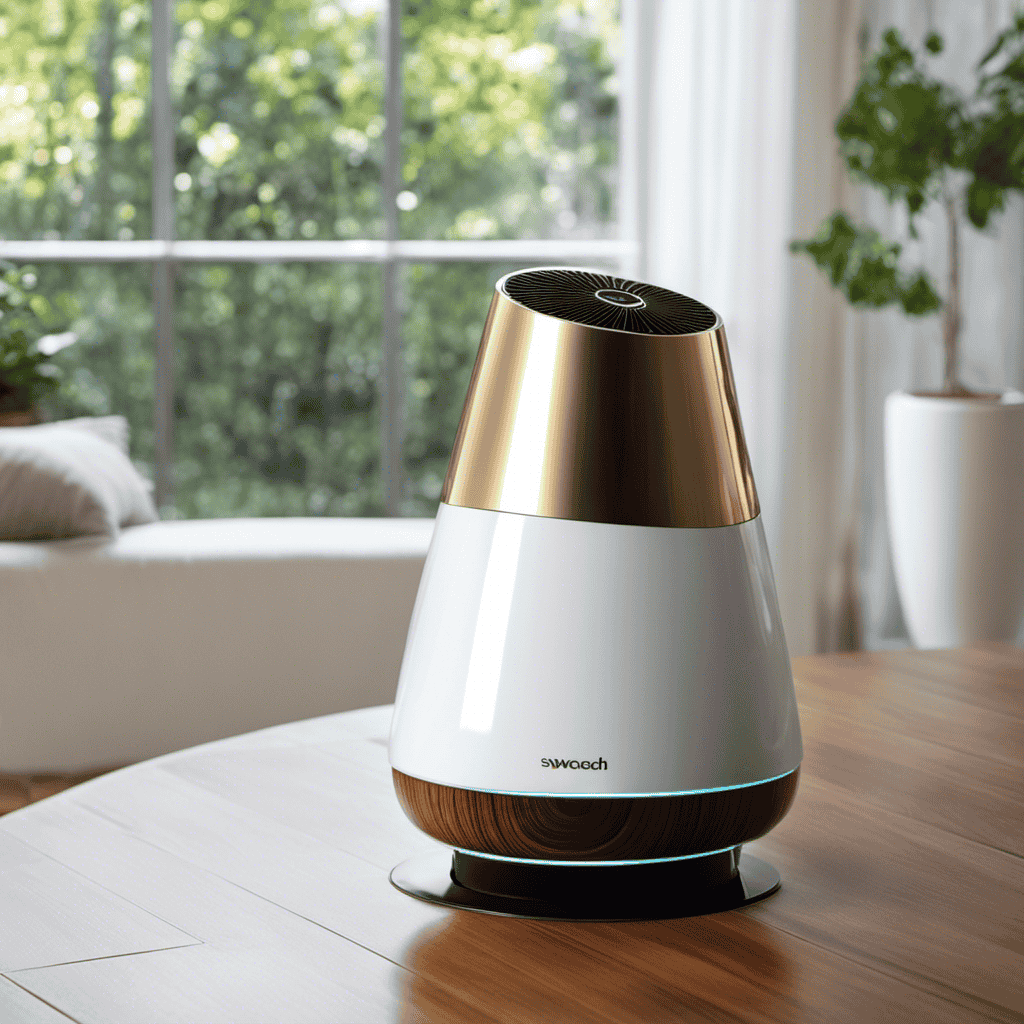
 Types of Air Purifiers8 months ago
Types of Air Purifiers8 months agoWhat Is an Air Purifier
-
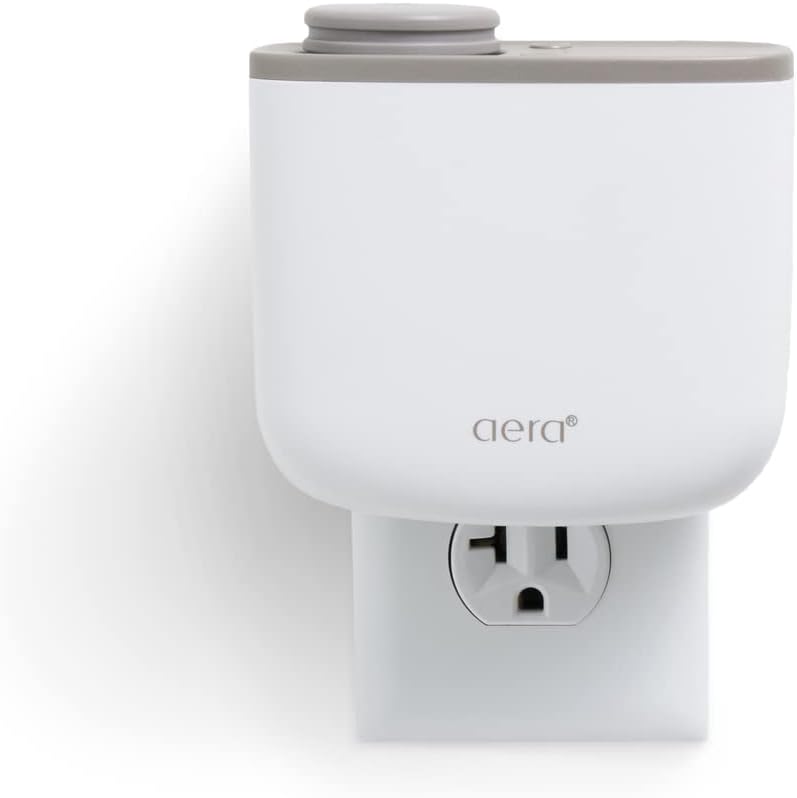
 Vetted6 months ago
Vetted6 months agoAera Mini Review: Smart Home Fragrance Diffuser With Hypoallergenic Scent Technology (2023)
-

 Maintenance and Tips9 months ago
Maintenance and Tips9 months agoHow to Reset Filter Light on Winix Plasmawave Air Purifier
-
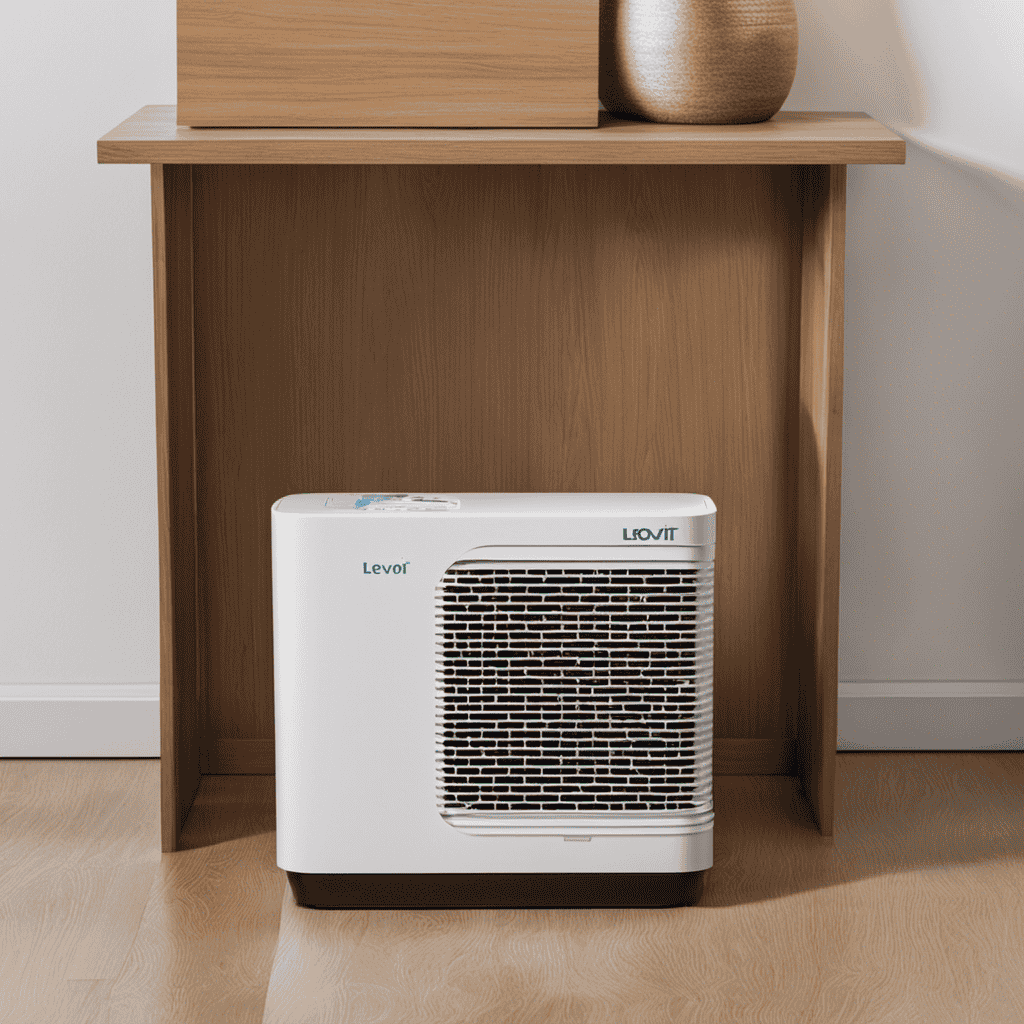
 Air Purifier Guides9 months ago
Air Purifier Guides9 months agoHow to Dispose of Air Purifier Filter Levoit
-
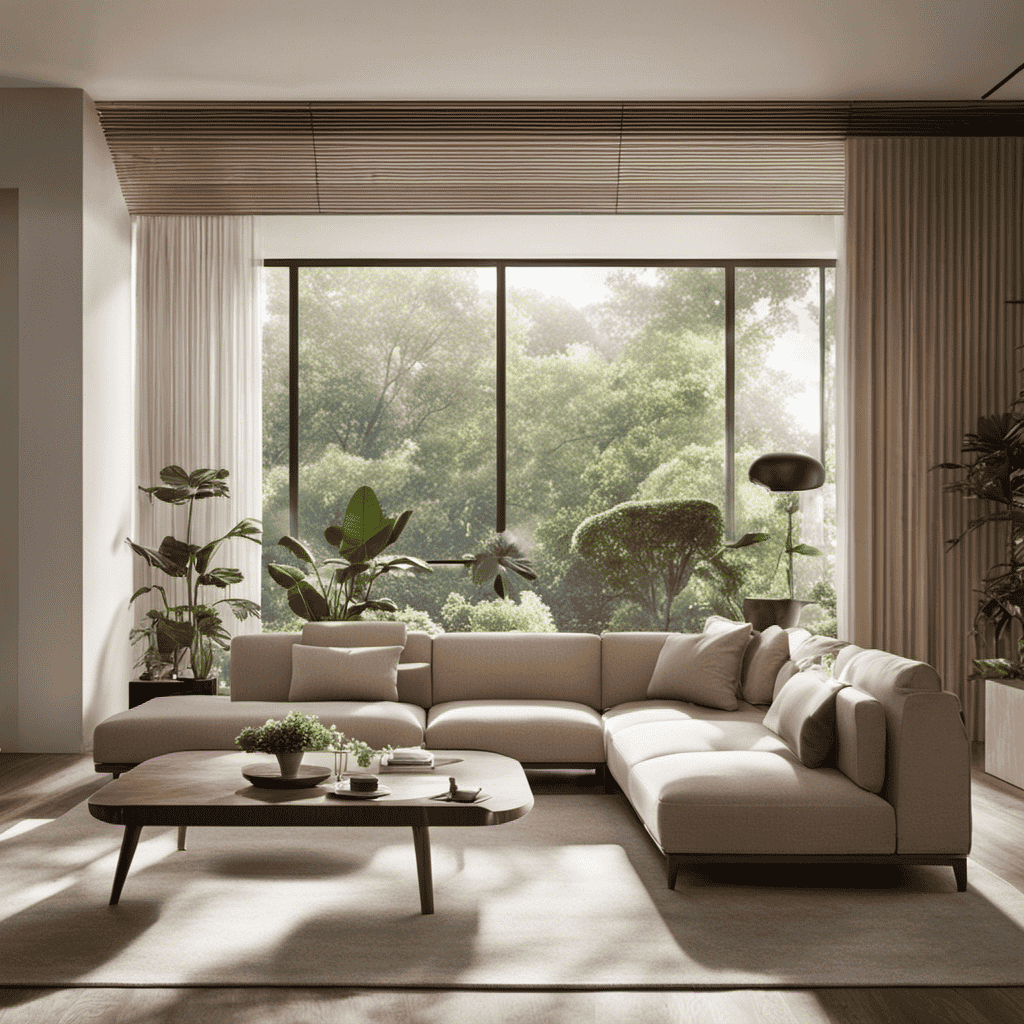
 FAQs - Advanced Queries9 months ago
FAQs - Advanced Queries9 months agoWhen to Use Ionizer on Coway Air Purifier






